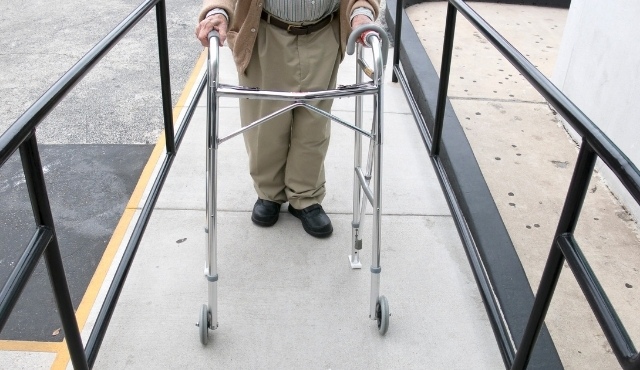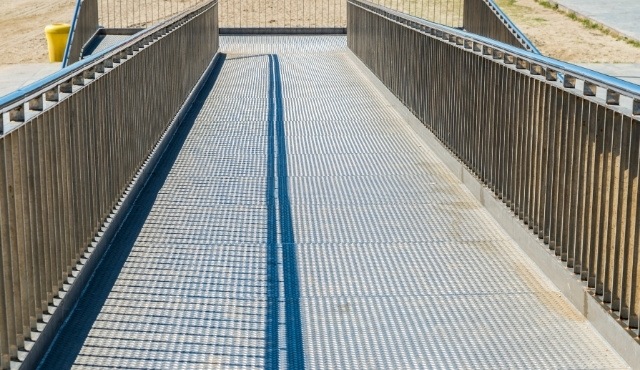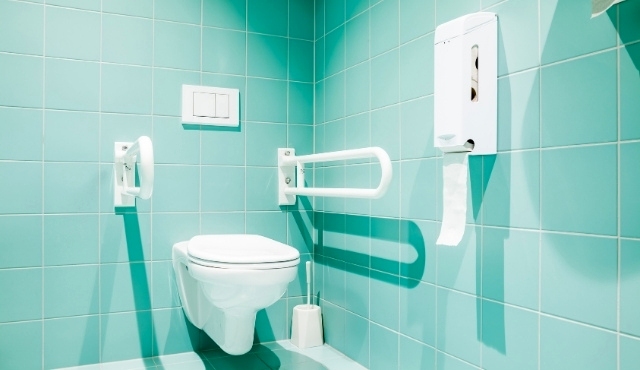People with disabilities and ferry travel in Spain
How to plan a great trip!Find useful information about ferry travel in Spain for people with disabilities. Learn how to plan your trip in Spain, what accessibility amenities to expect on board and how to make sure you have a smooth and safe sailing.

Enjoying summer vacation in Spain with family and friends
Disabilities and preparing for the ferry trip in Spain
Spain is one of the best destinations to visit for people with disabilities. There are frequent ferry crossings from mainland Spain to the Balearic Islands and the Canaries, offering a safe travel experience. Learn how to prepare for your trip in Spain.
Can people with disabilities travel by ferry in Spain?
People with disabilities can safely travel by ferry in Spain. Most vessels are equipped with various accessibility amenities for passengers with reduced mobility, deaf and hard of hearing travelers, as well as blind or visually impaired people. There are provisions for people with disabilities both at the port terminals, as well as on board.
Are ferries in Spain accessible?
The majority of ferries in Spain are accessible and offer a relaxed journey. You can easily board the ferry with your wheelchair or trolley, and the ferry crew will help you from the moment you arrive at the port. You can also park your vehicle at one of the designated parking spots in the ferry car deck, so that you bring your car to your final destination.
Good to know: Some vessels serving routes between the Balearic Islands are not designed to accommodate passengers with reduced mobility, due to restricted space. You can choose a ferry company with larger vessels for maximum comfort.

Couple taking in the view to the port on board the ferry to the Balearic Islands
Do I need to declare my disability when booking a trip in Spain?
In most cases you need to inform the ferry company of your upcoming trip so that they take all necessary steps to accommodate you and assist you on board. You should contact the ferry company 48 hours before departure to make sure there is enough space on board if you’re traveling with a wheelchair and have a crew member guide you from the terminal.
Tip: Bring with you any useful medical documents outlining the specifics of your disability, to make sure you can receive proper medical help if needed.
How to arrange for assistance?
To inform the ferry company of your upcoming trip, you can either contact them via phone or submit a form through their website, indicating special assistance or other requirements. Normally, if you don’t require any assistance for your ferry trip, it is not obligatory to inform the ferry company, but you may be requested to sign a form when boarding the ferry.

Boarding the ferry using an accessible ramp
Official regulations for people with disabilities and ferry travel in Spain
According to European Union legislation, ferry companies need to provide passengers with reduced mobility or other disabilities with all necessary assistance for their trip.
Ferry companies are required to have provisions for the boarding and accommodation of passengers with disabilities, and they need to make any necessary arrangements, provided that they are duly informed about the passenger’s needs in advance. Find out more details about the EU legislation for sea travel.

Enjoying the untamed coast of Formentera on a sunny day
Ferry amenities in Spain for people with disabilities
Ferry travel in Spain is one of the most convenient ways to get around for people with disabilities. Ferries are spacious and provide a variety of accommodation options from premium seats to wheelchair-friendly cabins.
Crew members are appropriately trained and they can help you board, guide you to your seat or cabin, store your luggage, and help you off the wheelchair if you wish. After arriving at the destination port, the crew can assist you with your luggage, accompany you through customs and guide you to your vehicle, bus or taxi.
Find out more details about boarding and disembarkation, safety features, accommodation options, and accessibility below.

Passengers with reduced mobility can park their vehicles at one of the designated parking spots on the ca deck
Terminal access
Most port terminals in Spain are wheelchair-accessible and you can easily get around. Once you arrive at the terminal, you can wait at a designated point for passenger pick-up. Request for a crew member to guide you on board and help you with luggage and mobility equipment, or wait at the meeting point in case you have already made arrangements with the ferry company.
If you’re getting there with a vehicle, you can either park at one of the parking lots in the port area or board the ferry with your vehicle to park at a specific car deck spot, close to the lift.
Boarding and disembarkation
Passengers with disabilities may board and disembark the ferry either prior to other passengers or once all passengers have boarded or disembarked. This way you avoid crowds. If you wish to have priority boarding, you can contact the ferry company to arrange the boarding procedure in advance and have plenty of time to get on the ferry.
Accessible ramps and handrails are available on the ferries to make boarding easier. In case you need a wheelchair, contact the ferry company to make sure there are enough wheelchairs on the day of traveling. You can pick up your wheelchair at the company’s port office or wait for a crew member to pick you up at the terminal.
Good to know: To make sure you receive assistance with terminal access and boarding, arrive at the port at least 1 hour before departure or at the agreed upon time.

Accessible ramp at the port of Barcelona
Safety and accessibility
There are different safety and accessibility features depending on the vessel. Generally, you can expect to find lifts, folding ramps and handrails, wheelchair accessible toilets, alarm buttons, parking spaces for people with disabilities, and seated stairlifts.
There are seats with seatbelts, folding armrests and straps at the ferry lounge, as well as wheelchair anchor points both in the indoor and outdoor spaces.
Lift buttons and other important signs are available in braille on a number of ferries to facilitate passengers who are blind or visually impaired. Announcements and safety regulations are displayed on the ferry screens and there are also frequent speaker announcements regarding the boarding procedure or other events.
Tip: Contact the ferry company or visit the ferry website to see a detailed description of safety and accessibility features on board the vessel of your choice.
Accommodation
For your trip in Spain you can book a cabin, choose to stay at the communal lounge, book a standard seat or enhanced accessibility seat, or spend your time wandering around the deck to enjoy the sea. There are wheelchair-accessible toilets at the communal areas on all large vessels, which are easily located and feature alarm buttons or cords, as well as grab rails.
Particularly for longer trips, consider booking a cabin with enhanced accessibility features such as mobility equipment access, extra space and wheelchair-accessible toilet.

Accessible toilet on a ferry in Spain
Accompanying persons and animals
Ferry companies may request that people with disabilities who are not in a position to travel alone are accompanied by a carer. If you’re traveling alone, you can contact the ferry company to plan your journey and arrange for assistance.
Passengers with disabilities can also travel with service animals on board. Service animals normally travel free of charge, but you need to let the company know before the day of traveling. In most cases, animals such as dogs need to stay on a leash and have adequate documentation to freely accompany you on board instead of staying in a carrier or the ferry kennels.

Eager service dog on the deck of the ferry to Ibiza
Where to book ferry tickets in Spain?
You can easily book the cheapest ferry tickets in Spain on Ferryhopper.
On our Map of ferries, you can see all available routes, to plan your trip. Visit our Ferry Operators page to find info about different ferry companies and accessible vessels and book your trip in just a few clicks!